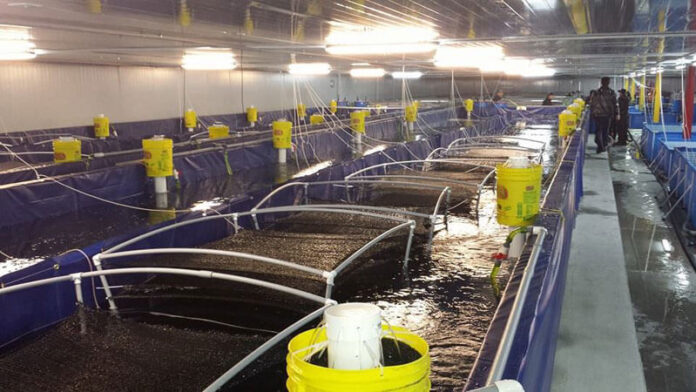
The Vietnam Association of Seafood Exporters and Producers (VASEP) highlights the urgent need to diversify export markets for Vietnamese shrimp, amidst concerns of potential countervailing duties from the US. Notably, Australia is identified as a promising, stable, and strategic market for value-added processed shrimp products from Vietnam.
Australia is currently the fifth-largest single market for Vietnamese shrimp, accounting for approximately 7% of the total export value. In the first four months of 2025, shrimp exports to Australia reached nearly $77 million, an 8% increase compared to the same period last year. From 2019 to 2024, shrimp export turnover to Australia steadily grew from $127 million to over $240 million.
Whiteleg shrimp dominates the export mix, accounting for 95% of the total volume, with value-added processed products contributing 40% to the total turnover. Australian consumers are increasingly favoring products such as shrimp dumplings, shrimp skewers, steamed shrimp, and frozen peeled shrimp.
According to VASEP, despite Australia’s population of around 25.7 million, the market is characterized by strong purchasing power, with consumers willing to pay a premium for high-quality, safe, and traceable food products. This presents a significant advantage for Vietnam’s strength in ready-to-cook and ready-to-eat shrimp offerings.
Additionally, Vietnam and Australia are members of modern FTAs such as CPTPP, RCEP, and AANZFTA, facilitating tariff reductions, customs procedure simplifications, and enhanced trade transparency. The elevation of bilateral relations to a Comprehensive Strategic Partnership in March 2024 further strengthens political trust and expands cooperation in the agricultural and aquatic sectors.

Logistics and Technical Standard Challenges
Despite the favorable conditions, Vietnamese enterprises face challenges in penetrating the Australian market. Australia enforces stringent quarantine regulations, requiring imported products to meet not only antibiotic and microbial standards but also freedom from viruses. Moreover, high logistics costs and lengthy transportation times (14-18 days) pose significant barriers for fresh and frozen products.
To boost exports to Australia, businesses propose intensified industry-specific trade promotions, especially in major states like New South Wales and Victoria. They also suggest investing in cold logistics for distant markets and advocating for relaxed technical and administrative procedures to facilitate the entry of whole and semi-processed shrimp from Vietnam. Additionally, the collaboration in shrimp breeding and green processing technology is encouraged.
Enterprises are advised to focus on deep processing and developing private labels for Australian supermarket chains like Woolworths and Coles. Emphasis should also be placed on digital traceability and obtaining international certifications such as ASC and BAP to enhance competitive advantages.
With the uncertainty surrounding the US market, Vietnam’s largest shrimp export destination, diversifying export markets becomes imperative. Australia, with its current growth trajectory, is expected to become a key market in the diversification strategy, supporting the goal of achieving $14-16 billion in seafood exports by 2030.
What Stocks Surge Amid the Israel–Iran Armed Conflict?
The Israeli preemptive strike in the early hours of June 13 and Iran’s retaliation risk escalating tensions between the two Middle Eastern nations, potentially leading to a direct conflict with devastating humanitarian and economic consequences. Financial markets have already reacted, reflecting expectations and predictions about the war’s impact.
The Golden Land Scandal: How a Mismanaged Lease Led to the Prosecution of County Officials
Despite the initial intention to only lease business premises, officials in Krong Pac district, Dak Lak province, advised on leasing land use rights, which is against regulations. A former deputy chairman of the district has been prosecuted for investigation into this violation.





















